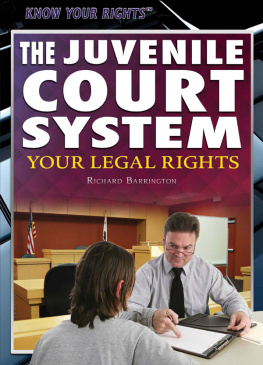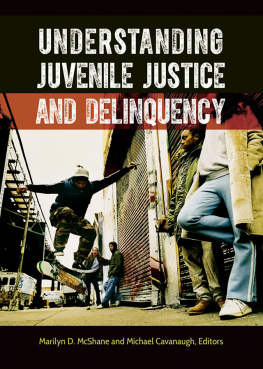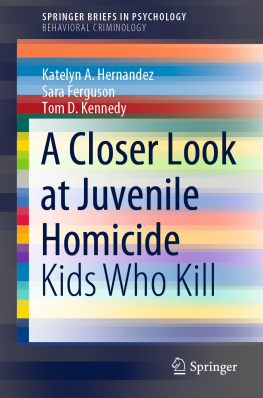Rimonda Maroun - Contextual Characteristics in Juvenile Sentencing: Examining the Impact of Concentrated Disadvantage on Youth Court Outcomes
Here you can read online Rimonda Maroun - Contextual Characteristics in Juvenile Sentencing: Examining the Impact of Concentrated Disadvantage on Youth Court Outcomes full text of the book (entire story) in english for free. Download pdf and epub, get meaning, cover and reviews about this ebook. year: 2019, publisher: Routledge, genre: Politics. Description of the work, (preface) as well as reviews are available. Best literature library LitArk.com created for fans of good reading and offers a wide selection of genres:
Romance novel
Science fiction
Adventure
Detective
Science
History
Home and family
Prose
Art
Politics
Computer
Non-fiction
Religion
Business
Children
Humor
Choose a favorite category and find really read worthwhile books. Enjoy immersion in the world of imagination, feel the emotions of the characters or learn something new for yourself, make an fascinating discovery.

- Book:Contextual Characteristics in Juvenile Sentencing: Examining the Impact of Concentrated Disadvantage on Youth Court Outcomes
- Author:
- Publisher:Routledge
- Genre:
- Year:2019
- Rating:5 / 5
- Favourites:Add to favourites
- Your mark:
Contextual Characteristics in Juvenile Sentencing: Examining the Impact of Concentrated Disadvantage on Youth Court Outcomes: summary, description and annotation
We offer to read an annotation, description, summary or preface (depends on what the author of the book "Contextual Characteristics in Juvenile Sentencing: Examining the Impact of Concentrated Disadvantage on Youth Court Outcomes" wrote himself). If you haven't found the necessary information about the book — write in the comments, we will try to find it.
While there is extensive research published concerning juvenile justice and sentencing, most of the research focuses on individual and extra-legal factors, such as age, race, and gender, with scant attention paid to the impact of macro-level factors. This book assesses how a specific contextual factorconcentrated disadvantageimpacts juvenile court outcomes and considers the relevant implications for the current state of juvenile justice processing.
Using case-level data from a Southern state with a large, diverse population and contextual-level data from the 2010 US Census and American Community Survey, Maroun assesses whether youth living in neighborhoods of concentrated disadvantage experience harsher outcomes than their counterparts from other types of neighborhoods. Additionally, she examines whether concentrated disadvantage interacts with individual race/ethnicity to influence juvenile court outcomes. Results suggested a direct impact of concentrated disadvantage on diversion, adjudication, and probation type. Further, race significantly interacted with concentrated disadvantage in impacting adjudication and probation outcomes, while ethnicity significantly interacted with concentrated disadvantage in impacting disposition and commitment type.
This research expands the knowledge of macrolevel influences on juvenile court outcomes, providing support for the notion that community context impacts juvenile justice processing. Results also highlight the fact that judges use discretion as well as other legal and extralegal factors in exerting social control, and do so differently at each stage of processing. This monograph is essential reading for those engaged in youth and juvenile justice efforts and scholars interested in issues surrounding race, class, social policy, and justice.
Rimonda Maroun: author's other books
Who wrote Contextual Characteristics in Juvenile Sentencing: Examining the Impact of Concentrated Disadvantage on Youth Court Outcomes? Find out the surname, the name of the author of the book and a list of all author's works by series.




